Volume 7 Number 2
©The Author(s) 2005
Project Katrina
Abstract
This article describes a spontaneous project that emerged from a group of 3- and 4-year-old children in Louisiana after Hurricane Katrina. The article describes how the teachers adapted the classroom and curriculum to meet the diverse needs of children who were evacuees, as well as those children who were affected in other ways by the hurricanes—Katrina, then three weeks later, Rita. Photographs and other documentation chronicle children's work and learning over the course of the project. Parents' comments and teachers' reflections are also included.
Background Information
School and Child Background
The LSU Child Development Laboratory Preschool is located in the School of Human Ecology at Louisiana State University in Baton Rouge, Louisiana. The program typically has twenty 3- and 4-year-old children enrolled and serves as a site for child development and early childhood teacher education, research, and outreach. The children in the program come from a variety of backgrounds representing families of various compositions, socioeconomic levels, races, religions, nationalities, and ethnic groups. Four children with special needs and three who speak English as a second language attend the program. Following Hurricane Katrina, an additional four children who are evacuees were enrolled.
For the majority of the day, the younger and older children interact together in indoor and outdoor spaces arranged by interest areas. The children are divided into two groups for whole-group activities. The program is staffed by the director, lead teacher, and two graduate assistants. Program staff strive to use developmentally appropriate practices, and projects are a major strategy for organizing and integrating the curriculum.
Community and Situation Background
As Hurricane Katrina struck the Mississippi Gulf Coast, New Orleans, and surrounding areas early on Monday morning, August 29, 2005, our lives dramatically changed. We experienced 14 hours of very high wind and 13 inches of rain. Although not as directly impacted as some areas, everyone in the Baton Rouge area experienced the hurricane at some level. Baton Rouge is 75 miles northwest of New Orleans and has a population of about a half a million people. As a result of Katrina, our population increased by 40% overnight. Evacuees filled shelters and hotels, and they moved in with families and friends. Many schools closed for a week, and most families had no electricity during that time. Although Baton Rouge experienced limited flooding, many of the children in our program have family and friends in the areas where there was massive flooding and destruction.
Emerging Project
As the school year began, we were working on a transportation theme. The topic was quickly moving toward a project on wheels, but everything we discussed, everything we initiated, continued to lead us to "Project Katrina."
Although the children's interests were definitely focused on Katrina, we really weren't sure we could focus on Katrina. We were emotionally drained from assisting in shelters, seeing the enormity of the devastation on TV, and experiencing changes to our everyday way of life. The dramatic increase in the city's population created problems with traffic; telephones; garbage; and shortages of food, gasoline, and other items. One of the graduate assistants and several undergraduate students who work in the lab are from New Orleans and had family members (too many) living with them. (Some are still here eight weeks later.) Many people in Baton Rouge have new "roommates" and are trying to adjust to life after Katrina (or "Bad Katrina" as one of the 3-year-olds calls it).
As we tried to continue exploring wheels used on different types of transportation, the children continued to connect the discussion to various forms of transportation they had seen in rescues on TV and vehicles that family and friends had used to evacuate. The children frequently heard helicopters and sirens because LSU served as a triage and hospital site for evacuees (the largest acute-care field hospital in U.S. history). We kept trying to continue with the topic of transportation, but as far as the children were concerned, all roads led to Katrina.
Phase 1
As the children arrived at school after Hurricane Katrina, parents and children commented on some of the events that had taken place during the previous week. Several parents talked about how they had worked with their children to gather food, toys, and clothes to take to local shelters. One mother mentioned that she and her 4-year-old daughter were collecting pennies to donate to a local fundraiser for hurricane victims. Other parents talked about the many relatives who were staying with them because they had to evacuate their homes. It was obvious that many of the children were aware of the countless changes that were taking place around them.
We began to notice how the children were incorporating events related to the hurricane into their play. The following observation shows how everyday water play evolved into a Hurricane Katrina discussion and experience. It is typical of the kinds of experiences we were seeing.
Several children were playing in the water play area outdoors (Fig. 1). The children began taking the water from the area and pouring it onto the dirt. The teacher got two metal tubs from the cabinet and told the children that they could pour the water into the tubs. Shonda (pseudonyms are used throughout) said that she was making gumbo. Others joined in and added "ingredients" from the yard (Fig. 2). A cloud moved in front of the sun, and the sky darkened as the children were playing. Hesiki appeared shaken and said to the teacher, "What happened? Is the hurricane coming?" She replied that it was just a cloud that moved in front of the sun as she pointed to the sky. About that same time, Shonda dumped the "gumbo" out of the pot, and it made a small lake in the mud and dirt near their feet. Hesiki examined the moving water and said, "The storm is coming!" The teacher asked what we needed to do about the storm. Hesiki replied, "We have to make the levees" (as he worked with the digger to make trenches in the mud for the water to go through) (Fig. 3). "The hurricane's about to blow. Hurry up y'all! It's about to blow." The teacher asked Hesiki about the people. He replied, "They in the water."
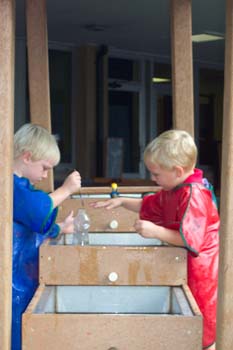
Figure
1. Sean and Jarod explore the water table. 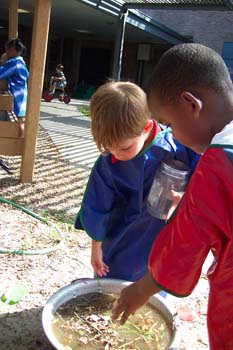
Figure
2. Gabriel and Hesiki add ingredients to a bowl of gumbo. 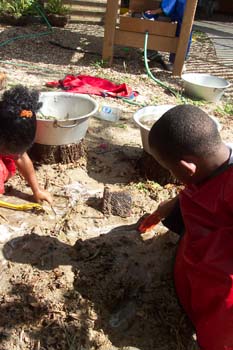
Figure 3. Shonda and Hesiki make levees.
It seemed as if every child had a story to tell about the hurricane. As they shared their stories and engaged in conversations, we were learning about their understandings and their misconceptions.
Jake (age 4) lives in Baton Rouge and had many family members from New Orleans staying at his house:
Hurricane Katrina came to our house too. But it didn't do much at our house. Well, there was a lot of wind. The junk was in everybody's yard. I have a feeling a lot of fence fell down. That was a problem. Aunt Jennifer and Uncle Mike's fence fell down, and Sachi too. I have plenty ideas that stuff blew away from people's houses and water got in. Then they had to go clean out. There was a lot of traffic by our house. All the cars are in our city, where their family and friends live. I think Mardi Gras will be here this time.
Ashley (age 4) lives in Baton Rouge:
New Orleans wasn't fixed. It was really windy. The hurricane blew really fast. No one could see any more. The hurricane could crash into you and you could die and it really hurts. And it might take your tree down, and it makes plants come down. And they really couldn't drive any more because the lights were out. And the gas light goes out and the lights couldn't come on. So they couldn't get the lights on. Then they will get sick and choke. And everything in the refrigerator was too hard and they couldn't open it and the TV couldn't come on. My dad plugged it in and everybody was safe.
Hesiki (age 4) lived in New Orleans and evacuated before the hurricane:
Teacher: Where did you live before you came to our school?
Hesiki: New Orleans.
Teacher: Why did you come to Baton Rouge?
Hesiki: We hurried and came when it was sunny before the storm came. Hurricane Ivan came the last time, then Hurricane Katrina too. Hurricane Katrina blew all the houses down.
Teacher: What is a hurricane?
Hesiki: It starts with an H. It blowed the wind and the rain and it blowed the houses down, and the roofs. It went to Florida too.
Another child (Jake): No, it didn't. That's our Hurricane.
It was obvious that the children were trying to make sense of the hurricane in their own ways. After much thought and consideration, we decided to yield to the children's interests and attempt a project on hurricanes. Even though it was not possible to study some aspects of the hurricane using a traditional hands-on approach, it was possible to research and investigate the effects of the aftermath of the storm and characteristics of hurricanes. The project needed to be constructed in a way that was sensitive to the children's developmental ages and needs in order to avoid causing additional stress for the children (and the staff). To begin, we developed a web of topics that children could explore (Fig. 4).
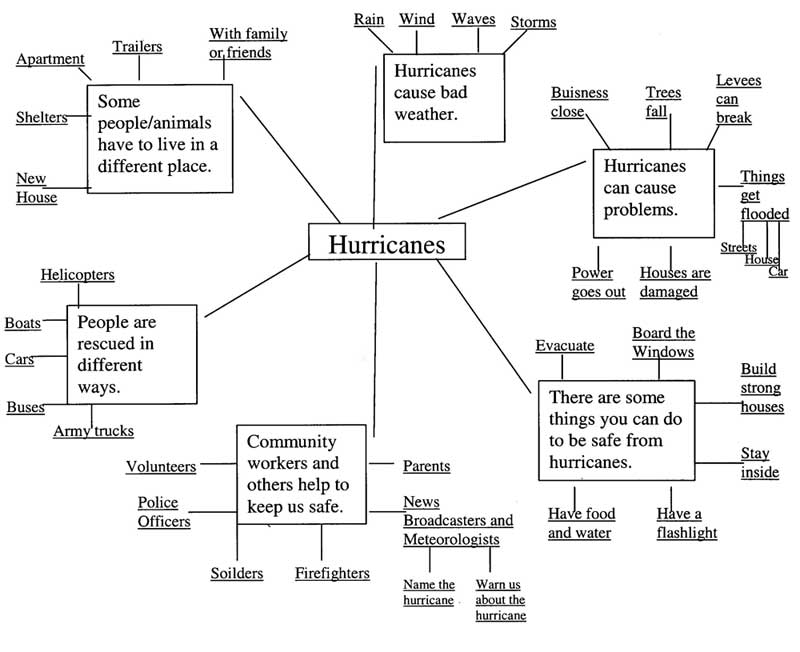
Figure 4. The teachers made a topic web about hurricanes based on the children's conversations.
During group time, we started gathering information on what the children knew about hurricanes. After reading the story Hurricane by David Weisner (New York: Clarion Books, 1990), we encouraged children to share their experiences. It seemed that each child had an interest in and knowledge about some specific hurricane topic, depending on his or her personal experiences. Many children talked about all of the fallen trees and branches they saw in their neighborhood after the hurricane. Others talked about levees, new people living in their homes, losing power, the trash in the city, the traffic in Baton Rouge, and rescuing people and animals. A big topic of discussion was the flooding of New Orleans. Much of the play that emerged centered on the need to keep people and animals safe.
Children also expressed their understandings through their art. We showed children various satellite pictures of actual hurricanes and demonstrated how hurricanes move in a counterclockwise circle. While using watercolors, children created pictures related to the hurricane and talked about their creations (Figs. 5-8).

Figure
5. Margo painted a hurricane and a firefighter. 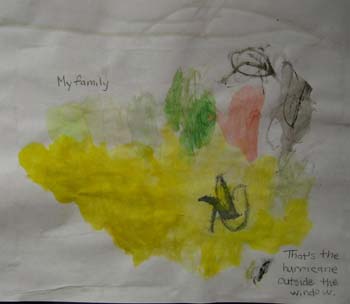
Figure
6. Erica painted a picture of her family and a hurricane outside the window. 
Figure
7. Tori painted a picture of a hurricane and a wave heading toward the grass. 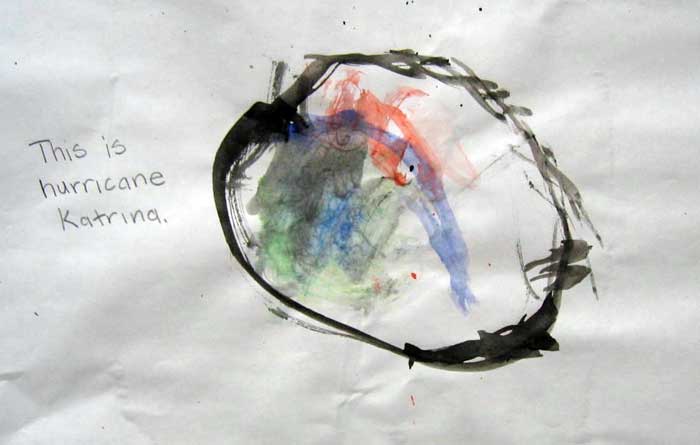
Figure 8. Nina painted a picture of Hurricane Katrina.
We took the children on a bus ride around campus and looked at fallen branches. The children watched a work crew loading a stack of branches onto a truck (Fig. 9). After returning to school, the children discussed what they had seen. One child wanted to know where the people were taking the branches.
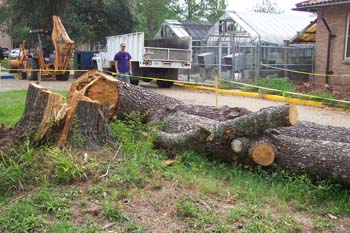
Figure 9. Men from Facility Services begin to clean up the trees that fell because of the hurricane.
As children excitedly shared their experiences, we made a KWL chart to record what they knew about hurricanes and what they wanted to learn. We recorded other things on the KWL chart from what we heard in children's conversations during their play (Fig. 10).1
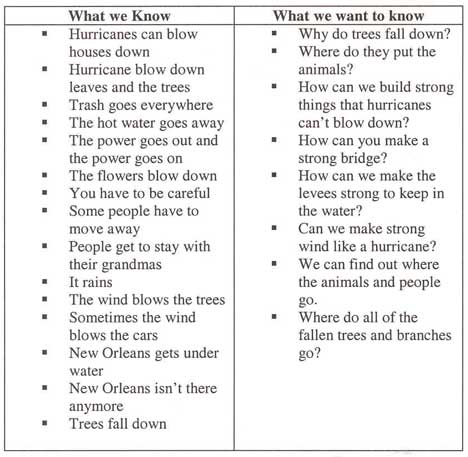
Figure 10. The children generated a chart of what we know and what we want to know about hurricanes.
Phase 2
The second phase of the project was beginning just as Hurricane Rita struck the coast of Louisiana, three weeks after Katrina. The day after the children returned to school following Hurricane Rita, they immediately began talking about the second hurricane. Sophia, a 4-year-old from Baton Rouge, had the following conversation:
Sophia: We lost power when the big storm came.
Teacher: Then what happened.
Sophia: I lost my bear.
Teacher: In the big storm?
Sophia: No, my daddy took it.
Sophia: We lost power last time, too.
Teacher: Really. You lost power for two hurricanes?
Sophia: Yeah.
Teacher: And what did you do when the lights went out?
Sophia: We had two.
Teacher: Two what?
Sophia: Two hurricanes.
Teacher: You had two hurricanes at your house? What happened when you had those hurricanes?
Sophia: It was raining—lots of wind. We had lots of rain and wind.
Teacher: Lots of rain and wind?
Sophia: Yeah. Then we lost power this time.
Teacher: Really?
Sophia: Lots of times.
Teacher: A lot of times?
Sophia: We waited and waited for the power to come on, then off.
Teacher: Oh no, why do you think that happened?
Sophia: It came last time it was raining and then it came off. Then it started raining. Then the rain stopped. You know what happened to my box [sandbox]?
Teacher: What happened?
Sophia: It got rain and leaves in it. And bugs in it too.
Throughout the project, children were allowed to follow their own interests related to the topic. Several subtopics that emerged that were of the most interest to the children were the impact of the wind, keeping animals safe, keeping people safe, and building strong levees. We planned and facilitated many engaging activities to support children's interests in these subtopics.
Impact of the Wind
We read The Three Little Pigs by Brenda Parks and Judith Smith (Crystal Lake, IL: Rigby, 1985) during story time to set up an investigation about houses and wind. Using a high-velocity fan, children first predicted, then investigated which materials would withstand a strong wind. Children worked in small groups to make houses using different materials. One group used pine needles, another group made a house with sticks, and the other group made a house with wood blocks. Before using the fan, the children investigated what would happen when they tried to blow down the houses. After the children huffed and puffed, they used the fan to see how much wind it took to blow each house down. The experiment was repeated using cardboard blocks, Lincoln Logs, and Legos (Figs. 11 & 12). At the conclusion of each experiment, the children discussed the results and how they could make houses stronger. One 4-year-old boy exclaimed, "We need steel!" We read another version of the three pigs, The Three Little Wolves and the Big Bad Pig by Eugene Trivizas and Helen Oxenbury (New York: McElderry, 1993), as a way to introduce other materials used in building houses.

Figure
11. Jake, Hope, and Sean build a house using cardboard bricks. 
Figure 12. Margo and Jaylon attempt to blow down a Lego house.
As a follow-up to the "Three Little Pigs experiment," the children took a field trip on campus to the Louisiana House (LaHouse—see http://www.louisianahouse.org).LaHouse is a research-based demonstration, education, and outreach center of the LSU AgCenter that is used to display the latest innovations in sustainable housing. Children learned about the different materials needed to build a strong house: wood, concrete, metal beams, and special long nails (Figs. 13 & 14).
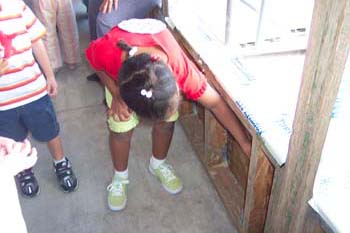
Figure
13. Ashley touches the strong structure of LaHouse. 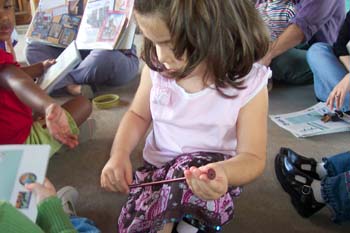
Figure 14. Margo examines a nail used for building strong houses.
One child discovered that his prediction of needing steel to build a strong house was correct (Fig. 15).

Figure 15. An expert from LaHouse tells the children about the importance of using steel to make houses strong.
The children went into the "safe room," which is a room made for a family to go into during bad weather. Following the trip, the children sketched LaHouse and shared what they learned about making strong houses (Figs. 16, 17, & 18). Their findings were added to the KWL chart.
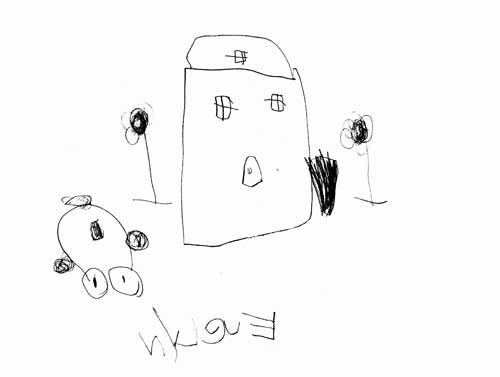
Figure 16. Evelyn drew a picture of LaHouse. 
Figure 17. Maggie drew a picture of LaHouse. 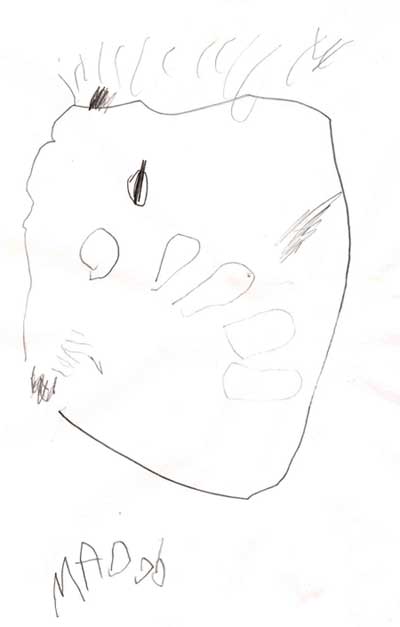
Figure 18. Maddy drew a picture of LaHouse.
Now that the children had observed and discussed strong houses, they were given the opportunity to make and decorate their own strong houses (Fig. 19). Using bricks, "pretend" steel (silver pipe cleaners), markers, construction paper, and glue, children made strong houses and put them on a display board. One child said, "I'm gonna rebuild New Orleans."
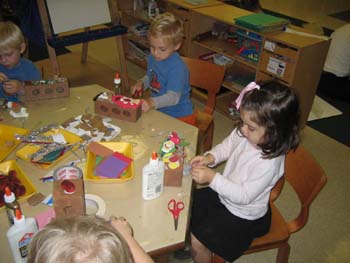
Figure 19. Sean, Jarod, and Margo work on constructing their strong houses.
Parents supported children's investigation of the effects of the wind. Two boys explored a huge tree that fell down near their house and a fallen tree on the LSU campus (Fig. 20). We incorporated children's interests by adding tree trunk "cookies" to our outside play area for the children to explore (Fig. 21).
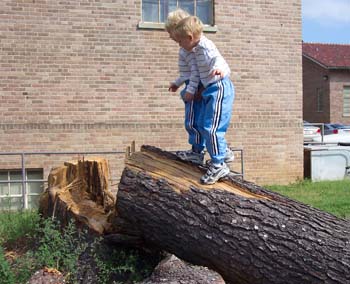
Figure
20. Sean and Jarod explore a tree that had fallen down on the LSU campus. 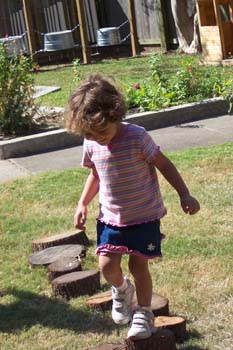
Figure 21. Layla balances across a line of tree trunk "cookies."
Children investigated other things that the wind can blow by using the fan and different pieces of trash and nature items (Fig. 22).
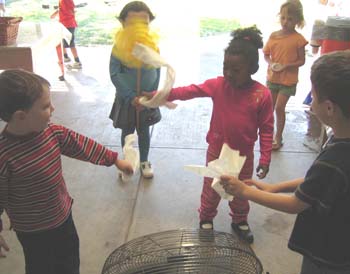
Figure 22. Children watch as trash blows in the wind of a high-velocity fan.
They weighed and measured the items as a way of predicting which things would be blown in a strong wind (Fig. 23).
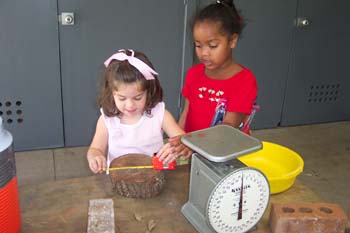
Figure 23. Margo and Ashley measure a tree stump before weighing it and testing to see whether it blows in the high-velocity fan.
After the investigation, the children made a 3-D trash sculpture using the items that were blown in the wind (Fig. 24).
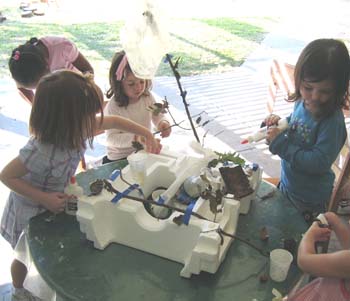
Figure 24. Children use items that blow in the wind to create a trash sculpture.
Children explored the wind in other activities as well. At the art center, they made spin-art using a salad spinner and paint. As the children turned the spinner, the teacher discussed how the wind from hurricanes can be weak or strong. They were encouraged to make a "strong wind" to see what would happen to the paint as they turned the spinner (Fig. 25). A related experience involved a spinning board. The children placed a marker in different places on the board while it was spinning to make circular bands similar to the ones seen in the satellite hurricane pictures (Fig. 26).
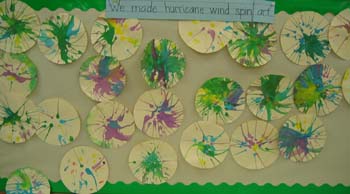
Figure
25. The children used a salad spinner to create hurricane wind art. 
Figure 26. Jake and Jarod work together to create circular bands similar to the satellite images of a hurricane.
During music, children pretended to be trees blowing in the wind as they sang, "I'm a Tree." They made different movements to show how the trees move for a light breeze, a tropical-force wind, and a hurricane-strength wind (Fig. 27). They also made sounds for the wind and rain using their mouths, hands, and rain sticks. We recorded them so that children could later listen to the "hurricane" sounds.
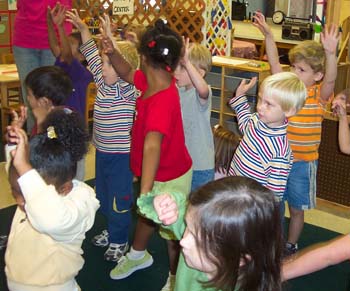
Figure 27. The children move like trees in the wind while singing "I'm a Tree."
To further increase children's understanding of the topic under study, we invited two hurricane experts to the classroom. Using developmentally appropriate language and images, they showed a video clip of how a hurricane moves across water (Fig. 28). We planned a trip to the LSU Hurricane Center to examine the wind machine, but we will not be able to visit until after hurricane season.
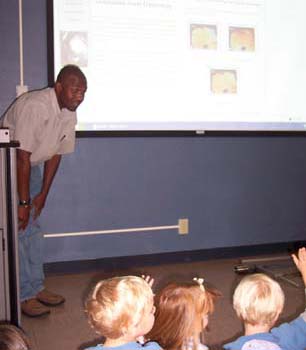
Figure 28. A hurricane expert answers the children's questions about hurricanes.
Keeping Animals Safe
In addition to the wind, the children seemed interested in keeping people and animals safe. We added stuffed cats and dogs to the block center. The children used blocks and other materials to create homes and animal shelters to "keep the animals safe" (Figs. 29 & 30).
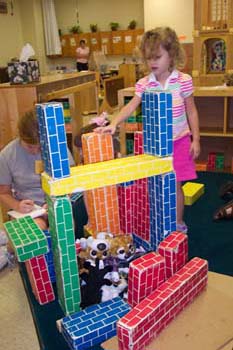
Figure 29."My cat ran away from the
storm," says Elizabeth, as she builds an animal shelter. 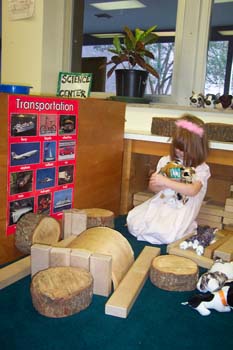
Figure 30. Tori hugs her animals before placing them in the "safe house" she built.
The following conversation was recorded between a child and teacher during block play:
Tori: Now the cats can go on this one (pointing to the bridges she made). The cats and dogs have to go here.
Teacher: Why do the cats have to go across the bridge?
Tori: Because of the water—the kitties have to go this way. They can't go this way; there is some water. It's soil water.
After Rita (the second hurricane), the children saw numerous pictures on TV of farm animals in danger because of the massive flooding that occurred in the rural areas and marshlands. They increasingly began to focus on helping animals. The children gathered farm animals and boats from other outdoor areas to use in their play (Figs. 31-34).
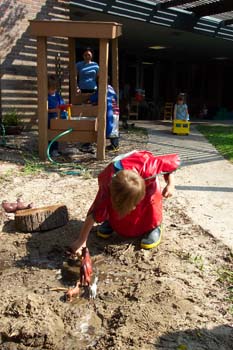
Figure 31."The storm came and the
horses got stuck in the water and the cows got stuck in the water and the
people got stuck in the water," says Gabriel as he works in the mud. 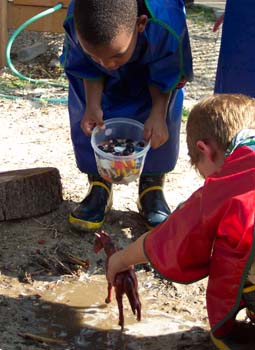
Figure
32. Hesiki says, "I got to rescue—I got to rescue all the people and the
animals!" 
Figure 33. While playing with the
animals in the mud, Shonda spontaneously begins singing "Stay with the family—that's
the one. Stay with your family and don't go away." 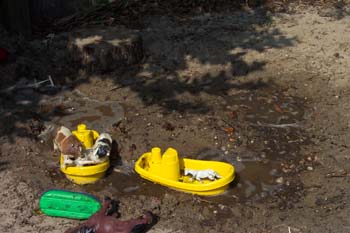
Figure 34. Animals are rescued by boats.
We used the Federal Emergency Management Agency (FEMA) Web site (FEMA for Kids http://www.fema.gov/kids/) to show the children pictures of animals being rescued and living in shelters. Young children were not allowed to visit the animal rescue shelter or the temporary pet shelter established on campus. A pet owner came to the classroom to talk about the animal shelter on campus and the importance of caring for animals that do not have homes. She also talked about how some pets go back to their families while other pets find new homes with people who adopt them. Following her visit, the children shared what they had learned, and we recorded their responses on the KWL chart. We also asked children for ideas about what to do with the stuffed dogs and cats in the block center that did not have a home. Together we decided that each child could adopt an animal and give it a new home. We began planning for this event to be included in the culminating activities of Phase 3.
Keeping People Safe
To extend upon the children's interest and knowledge about ways to keep people safe, we added police officer, firefighter, and military uniforms to the dramatic play area. During center time, the children pretended to help people who needed assistance (Figs. 35 & 36).
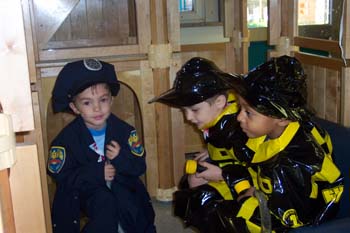
Figure
35. Children pretend to be police officers and firefighters. 
Figure 36. Two firefighters use rescue vehicles near the animal shelter.
A member of the National Guard, who helped in New Orleans after Hurricane Katrina, came to the classroom. He talked about the importance of helping people and keeping them safe. He discussed the different ways that he helped. He gave out food and water, saved animals, took people to safe places, and helped clean up the trash. He also talked about the vehicles used and the special uniform he wore to let people know that he was a soldier (Fig. 37). After his visit, we discussed different ways that the children helped in their homes, schools, and community. We also made a Venn diagram comparing the different types of rescue vehicles and their mode of travel (land, air, or water) that related to our abandoned transportation theme (Fig. 38).
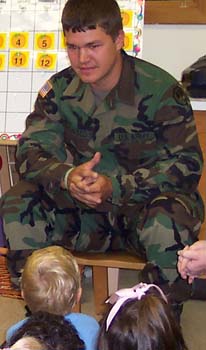
Figure
37. A member of the National Guard visits with the children. 
Figure 38. A Venn diagram is created to explore the various rescue vehicles on the land, in the air, and in the water.
During another group time, we reread Hurricane. Following the reading, children brainstormed things to include in a "Hurricane Kit" in preparation for a hurricane. Some of the items that they added to the kit were a flashlight, batteries, wood for a fire, water, a blanket, and a favorite toy. We put a suitcase and some of the suggested items in the dramatic play area (Figs. 39 & 40).
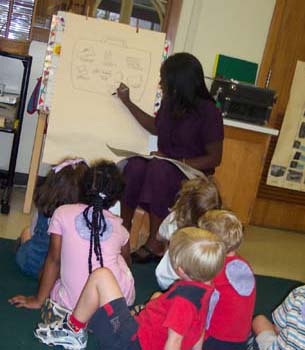
Figure
39. The children generate a list of items that belong in a hurricane kit. 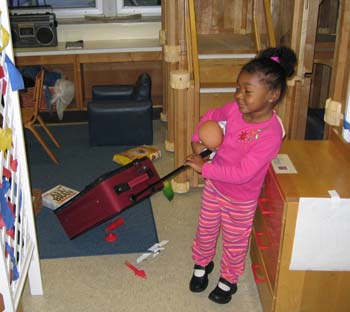
Figure 40. Shonda drags a packed suitcase as she says, "We going to the hotel."
Building Strong Levees
The children were also interested in how to make levees strong. During mud play, children were making stronger and higher levees but were discouraged because the water seeped out of the "rivers" and "canals" very quickly (Fig. 41). They continued to ask questions about how to make levees so that the water would stay inside the structure. Much of their discussion during the levee building involved the placement of homes to keep people safe. The levee building was expanded to the sand area, which again caused frustration because of the water seepage. Finally, we decided to test various materials to see what would make the best levees. The levees would later be used on the display board with the strong houses the children made.

Figure 41. The levees built in the mud area become stronger and higher.
Before attempting to test the other materials, we visited the Mississippi River levee that borders the LSU campus. The children played on the levee (Fig. 42).

Figure 42. Children explore the Mississippi River levee bordering the LSU campus.
Back at school, they talked about its size and strength. One boy described the levee as "a hill that keeps the water from going everywhere." We read The Hole in the Dike, retold by Norma Green and illustrated by Eric Carle (New York: Scholastic Books Services, 1974). The children explored different materials to see which made the best levee. They attempted to build strong levees using various materials: play dough, clay, rocks, and cardboard (Figs. 43-45).
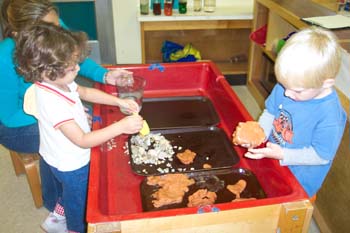
Figure 43. Layla and Sean test play
dough and rocks as materials for building strong levees. 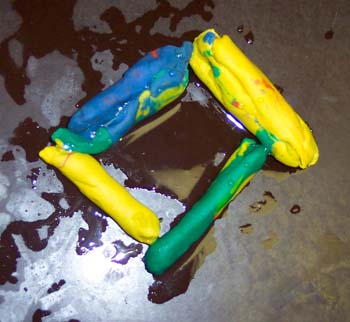
Figure
44. A clay levee structure fails to hold water. 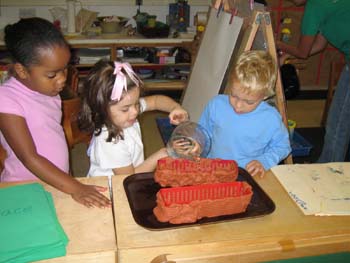
Figure 45. The children test a new clay levee to see whether it will hold the water.
After making levees with each of these materials, the children decided that other materials were needed. They filled sandbags and tested them outside. They built a levee with the sandbags, but the levee still did not hold back the water (Figs. 46 & 47).

Figure
46. The children fill sandbags to make a levee. 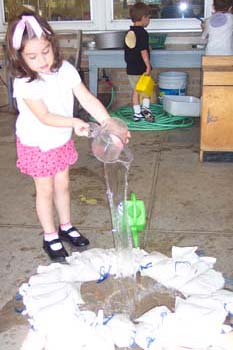
Figure 47. The children test the ability of the sandbags to hold the water.
Omar tried to tape the levee together, and the children poured water to see whether it would hold. Still, the levee was breached. They tried to build the levee higher, but it didn't seem to help. Finally, Omar used a more inventive idea—he used a pot to hold the water within the levee. He triumphantly proclaimed, "I did it!" (Figs. 48 & 49).

Figure
48. Omar tapes the sandbags to try to make the levee stronger. 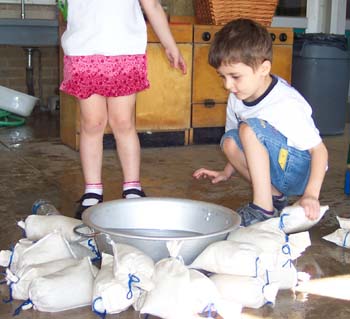
Figure 49. Omar solves the problem of the levee breaches.
One of the authors showed the children pictures of her home and high school that flooded in New Orleans. Elizabeth, a child who evacuated from Biloxi with her family, shared pictures of her house and neighborhood (Fig. 50).
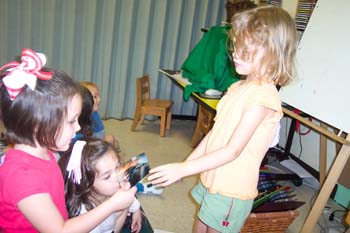
Figure 50. Elizabeth shows pictures of her neighborhood in Mississippi as she tells us, "The pink house broke."
The children also examined pictures of the trash and cleanup in the New Orleans area. After the discussion, the class added hurricane words to the word wall as part of a shared writing experience (Fig. 51).
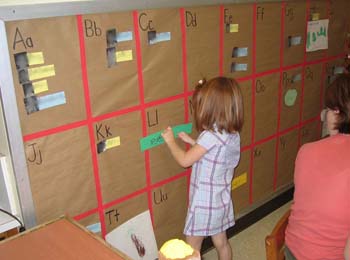
Figure 51. Tori adds her writing of the word "levee" to the word wall.
Phase 3
Although we haven't completed this project, interest in Katrina is beginning to wane among the children, and they are not as eager to discuss hurricane-related issues. One father recently shared that his 4-year-old son, while hearing the TV news, commented, "Katrina, Katrina, Katrina. I'm sick of Katrina!" The father also noted that while his son continued to spontaneously engage in "hurricane-related play activities," he seemed to be ready to move on to other topics. Another parent expressed concern when her 4-year-old daughter said, "Oh no! Katrina is coming back!" when it began to rain. Her mother reassured her that was not happening. Sensitivity to children's interests and emotional well-being was an important aspect throughout Project Katrina. Although we anticipate periodic resurgences in hurricane-related play and discussions, we have begun our culminating activities. We set up displays to show what the children have learned, tied to the Louisiana Benchmarks and Grade Level Expectations, to inform parents, students, and other visitors. These displays included (1) an automated PowerPoint picture presentation available to parents as they arrive and leave, (2) a quilt of the hurricane experience (Fig. 52), a 3-D trash sculpture (Fig. 53), a table display with strong homes and levees—"New Orleans" (Figs. 54-58), a hurricane art display—"Hurricanes: A Child's View" (Fig. 59), and a wall display documenting the children's explorations and discoveries (Figs. 60-62).
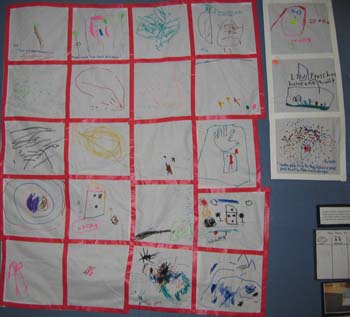
Figure
52. The children made squares to be added to the LSU Preschool Hurricane Quilt. 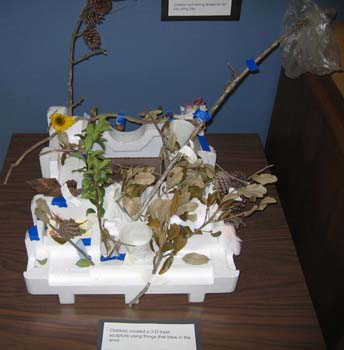
Figure
53. The children collected things that blow in the wind to create a trash
sculpture. 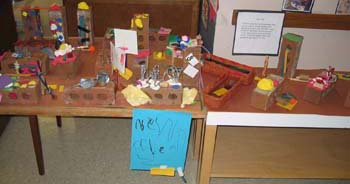
Figure 54. The table display was set up
showing the strong houses and levee that the children built. 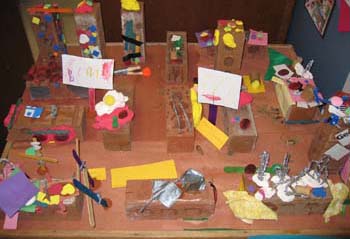
Figure 55. The children added McDonalds' signs, turtles, cars, street signs, and grass to the city. 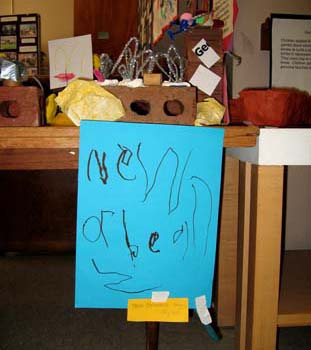
Figure
56. A child wrote "New Orleans" to name the city. 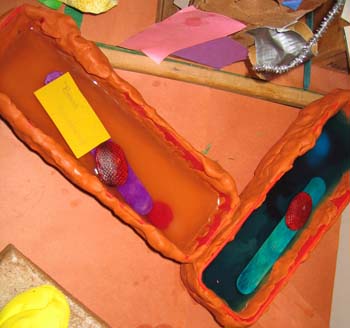
Figure 57. The children added boats to
the water. 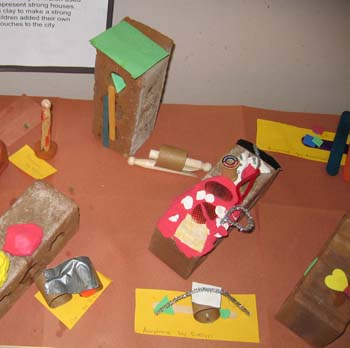
Figure 58. The children added a person, cars, and airplanes to the city. 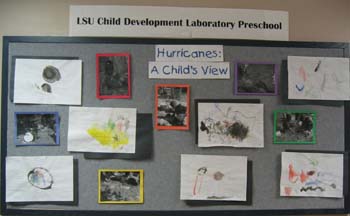
Figure
59. A display of the children's art was set up in the lobby. 
Figure 60. Documentation of children's
stories, pictures, and words was posted in the hallway. 
Figure
61. The finished KWL chart was posted as part of the display. 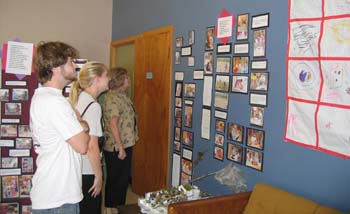
Figure 62. Parents and other visitors view the display of the project.
We are planning other culmination activities as well. For example, we are planning an "Adoption Ceremony" for children to adopt the stuffed cats and dogs from our classroom and bring them home. The children will name their pets and write a "certificate of adoption." We are also planning a class book using photographs about hurricanes Katrina and Rita that show happy, safe endings. We want to talk about people going back home, getting new houses, moving into trailers—how New Orleans is "getting fixed." The children will have the opportunity to check out the book and share it with their families.
The children's interest seems to be moving toward other aspects of weather. As Project Katrina concludes, we are shifting our focus to "sunnier days" with attention focused on other types of weather.
Parents' Comments
We sent a note home asking parents to tell us about the children's responses to the study of hurricanes. A mother shared that her son said he was going to be a builder when he grew up so he could "build New Orleans again." One parent, an evacuee who has returned to New Orleans, sent a letter expressing their family's appreciation and thanking us for making an unfortunate situation less stressful. Others had more to say:
It is great that you are following the kids' lead.... We've "evacuated"—packed suitcases and brought dolls and animals to new homes (different rooms), built sturdy structures out of Legos and blocks to stay safe, watched the weather channel, talked about if we would take our dog if we had to evacuate, done some real yard work together (trying to save two trees that fell). Talking about trees and debris we see while driving, hosting people in our home, discussing the traffic, numbers of evacuees, new students at brother's school, etc. etc.!! Lots of questions and playing out new things learned, but no fears and tears—just lots of interest. Thanks for pursuing this in a safe manner.
Holden talks a lot about hurricanes. He has asked about people losing their toys, houses, cars, and even babies. Once he asked, "Does Katrina die babies?" He also was very interested watching the Weather Channel and news broadcasts. He talks about Katrina and Dorita [Rita]. He personifies the hurricane by wanting to know if it is "nice" or "mean." He asks if the hurricane does not like the tree or house that has been knocked down. He wants to know if his house will be knocked down and if we will take care of him. He asks, "Why does God make hurricanes?" He will randomly incorporate the name Katrina into his everyday conversations. He comments about the traffic around town and wants to know if the people are going to New Orleans to check on their houses.
Reflections
Katrina continues to get blamed for many things, including missing puzzle pieces. The hurricanes are responsible for major changes that have occurred in the lives of numerous people in the Gulf Coast area. Many of the stories do not have happy endings. Some do. Shonda, age 3, shared hope of a new life for her cousin Kyre, an evacuee from New Orleans who moved in with them and attended the LSU Preschool with Shonda. Kyre left our school after three weeks when her mother was offered a job and a home in Indianapolis, Indiana:
Remember Kyre? The hurricane came, and Kyre was scared because the hurricane got all the clothes out of the house. And then the hurricane get her house. And then it took all the shoes away. And then it took all the toys away. And then it took all her refrigerator away. Now she's going to a new house in Indiana, Mississippi!
Note
1. A KWL chart is a visual representation depicting what children already know about a topic (K), what they want to know (W), and what they learned after investigating the topic (L). It is a useful tool for assessing children's prior knowledge and understanding, guiding teacher planning, and documenting children's learning.
Acknowledgments
We would like to thank all the children and families of the LSU Child Development Laboratory Preschool for allowing us to share in a stressful and life-changing experience. We would also like to thank the people who served as valuable resources as we explored this topic: Elva Bourgeois, Lawrence Kiage, Terry McCloskey, and Sandy Scallan.
Author Information
Carol Aghayan is an instructor in the School of Human Ecology (SHUEC) and lead teacher in the LSU Child Development Laboratory Preschool. She teaches classes in early childhood education.
Carol Aghayan
School of Human Ecology
Louisiana State University
Baton Rouge, LA 70803
Telephone: 225-578-1707
Email: caghay1@lsu.edu
Andree Schellhaas and Angela Wayne are graduate assistants in the LSU Child Development Laboratory Preschool and are working on their master's degrees in early childhood education in the SHUEC.
Diane Burts is the Grace Drews Lehmann professor and division head of Family, Child, and Consumer Sciences in the SHUEC. She teaches classes in early childhood education and conducts research in the area of developmentally appropriate practice.
Teresa Buchanan is an associate professor of curriculum and instruction in the College of Education and adjunct in the SHUEC. She teaches classes in early childhood education and conducts research in developmentally appropriate practice.
Joan Benedict is an assistant professor in the SHUEC and director of the LSU Child Development Laboratory Preschool. She teaches classes in early childhood education and conducts research in high-quality care and education.

